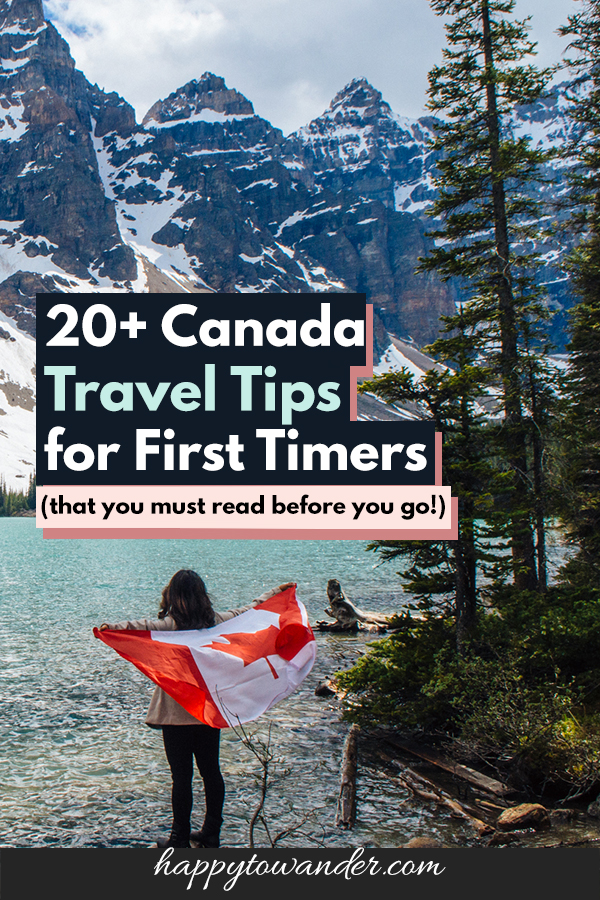*FYI - this post may contain affiliate links, which means we earn a commission at no extra cost to you if you purchase from them. Also, as an Amazon Associate I earn from qualifying purchases. Check out our Privacy Policy and Disclosure. for more info.
There are many things that first time visitors don’t know about Canada.
From bear-proof garbage cans that nobody can open to hundred dollar bills that smell like maple syrup, it’s safe to say that this beautiful country of mine is as confusing as it is photogenic.
So, in this post, I am going to be sharing everything you need to know before a trip to Canada, from common mistakes to avoid and money saving tricks to the unspoken tipping culture rules that you’ll no doubt hate.
I hope you find this helpful!
1. Don’t forget to apply for your eTA (or visa)
Now first, let’s talk entry requirements. A very common mistake first timers make is assuming that if they don’t need a visa to go to Canada, then they don’t need to do anything else.
But this actually isn’t true.
When it comes to flying into Canada, citizens of most visa exempt countries (apart from the US) must apply for an eTA to fly into Canada, even for layovers.
Before you panic though, don’t worry, eTAs only cost $7 CAD and the online form takes just a few minutes to complete. They’re also valid for up to five years or until your passport expires so they’re good for a while. The important thing though is to remember to get one!
While they say sometimes eTAs are approved in minutes, the process can take days, so you don’t want to risk it by applying at the check in desk which is apparently a very common mistake.
In any case, the official Canadian government website here has all the details of whether you need an eTA or a visa broken down by country of citizenship so be sure to consult that list.

2. Double check if you need to clear passport control/re-check your bags
A very annoying thing about air travel in Canada is that when you are transferring from an international flight to a domestic flight, even if it’s just a quick layover, sometimes you do need to pick up your bags from baggage claim and recheck them.
Thankfully, some airlines these days will check your bags through to the final destination but unfortunately that depends on the airline, airport and in some cases, the length of the layover, so just beware of this and double check when you’re booking, otherwise this can bring a lot of stress with short layovers.
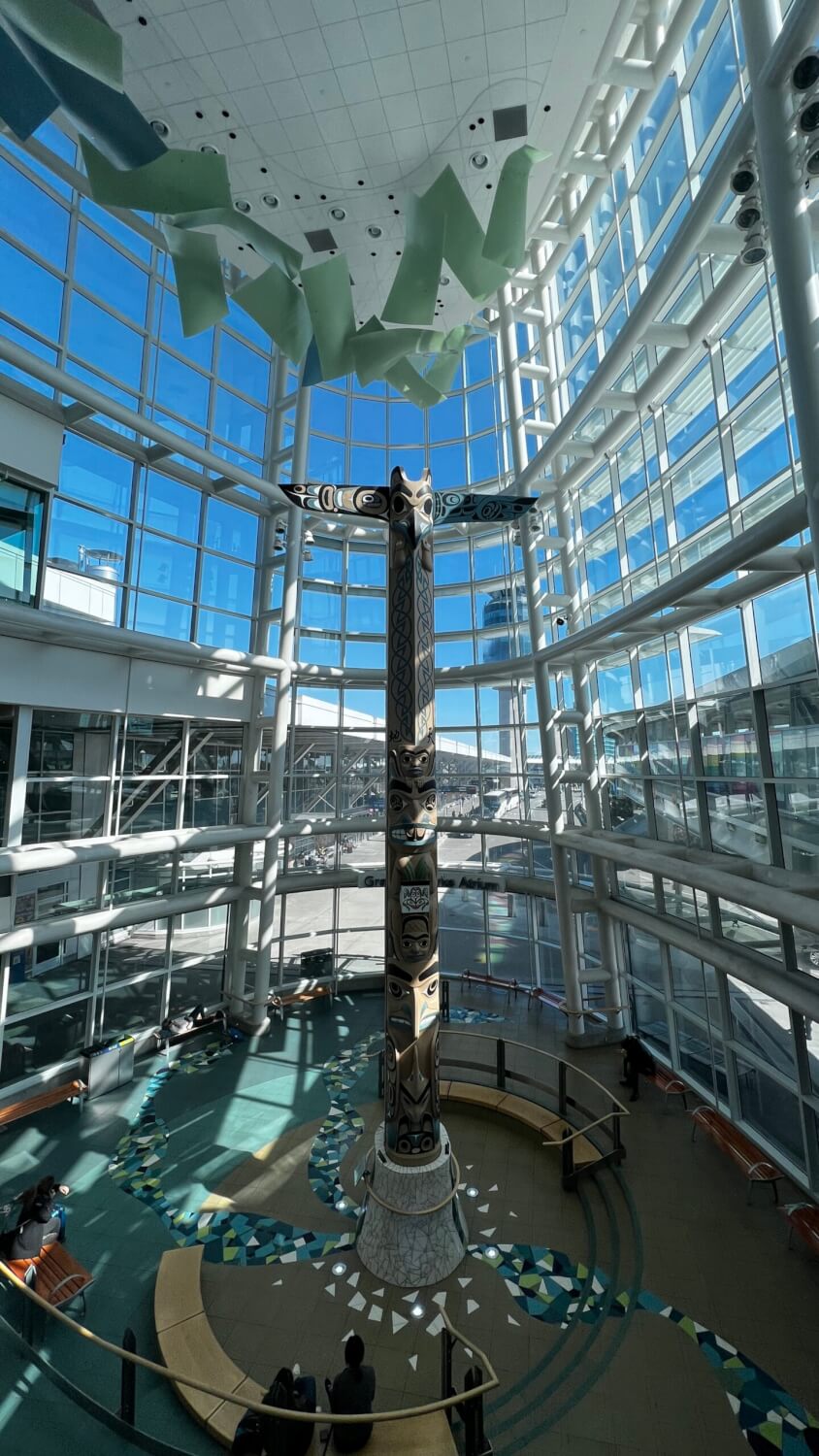
3. Pre-book a time slot for security security
And to minimize stress at the airport, do look into whether or not it’s possible to pre-book a time slot to go through airport security.
Several airports in Canada now offer this. I did it in Toronto and it couldn’t have been easier!
Basically you book a slot, then when you get there, you get priority access through the security line, a huge perk if you’re visiting during a peak period.
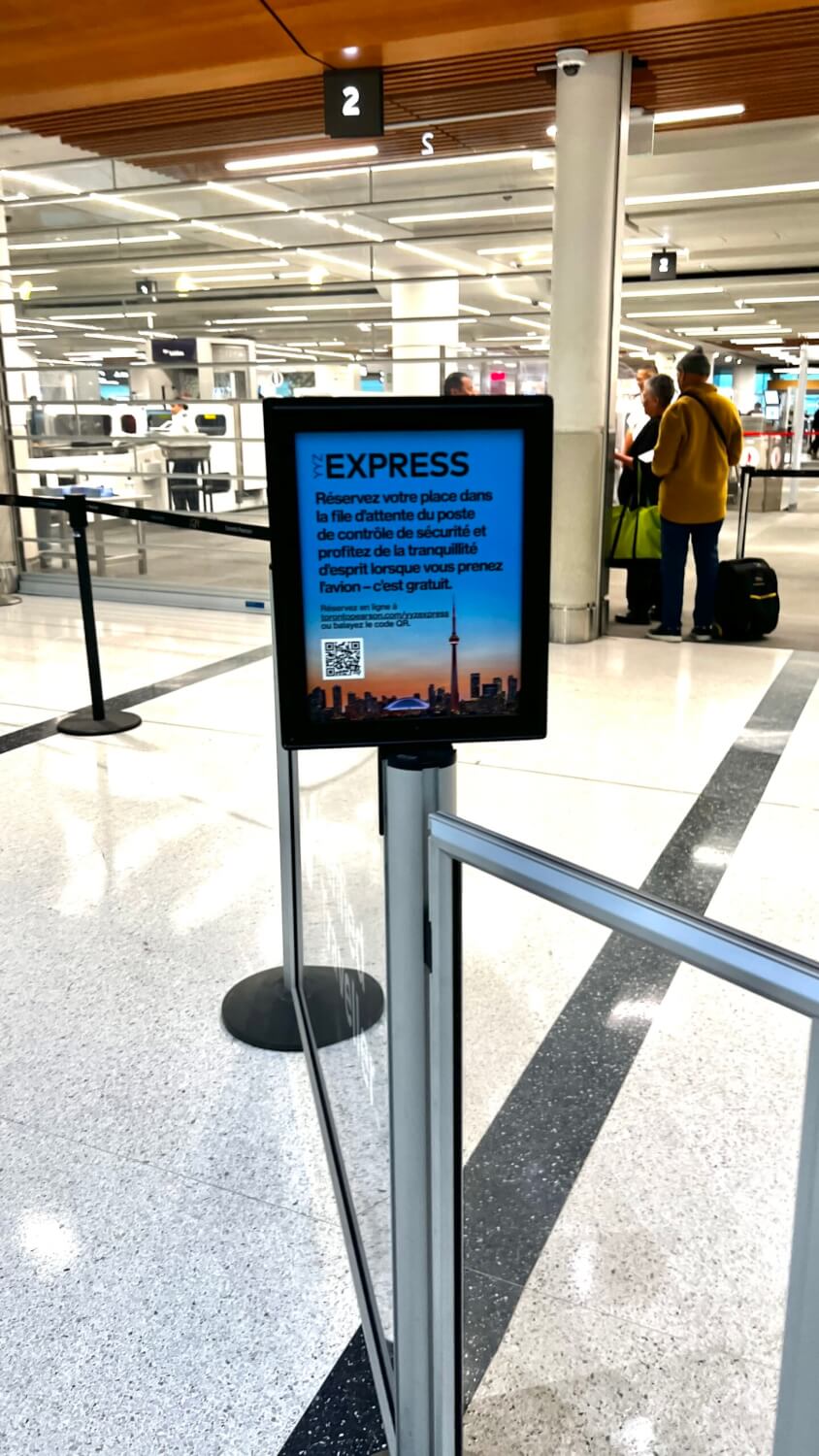
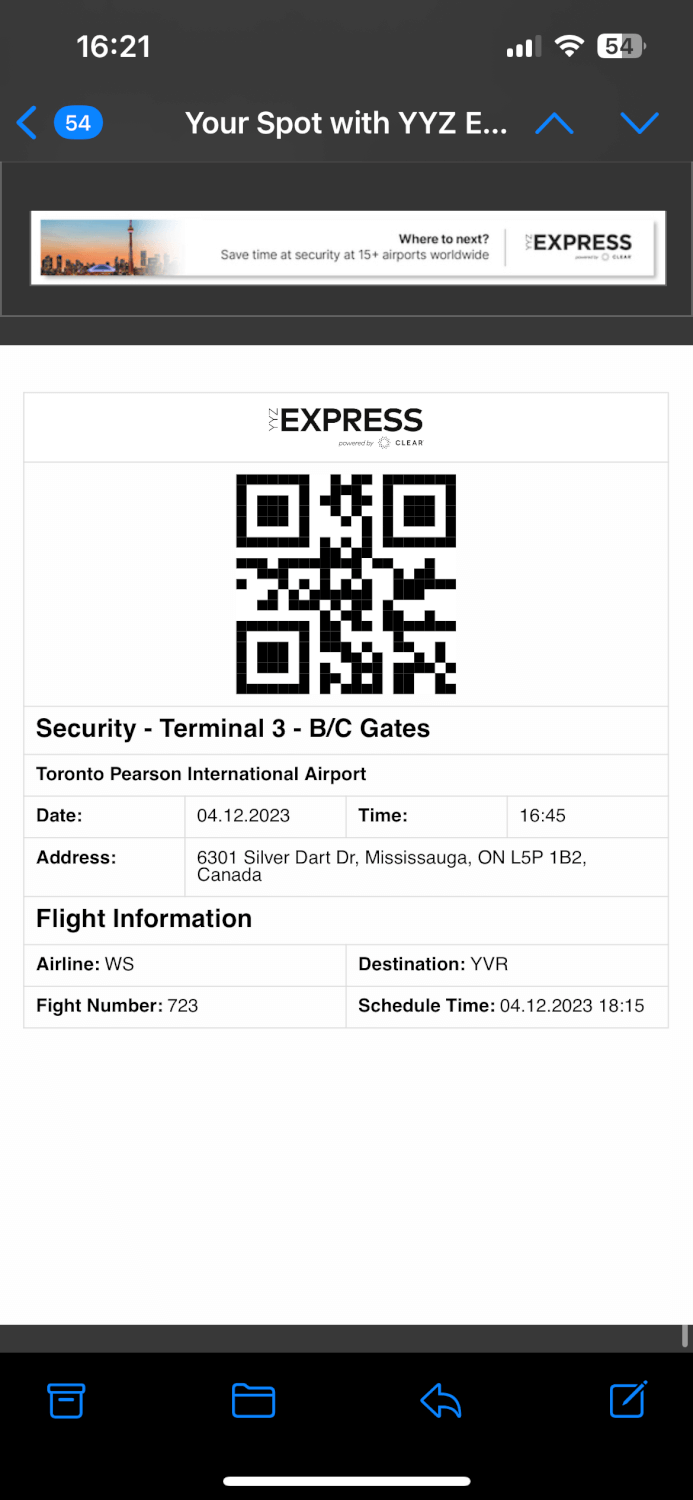
4. Remember: Canada is huge and spread apart, so don’t spread yourself too thin
By area, Canada is the second largest country in the world so needless to say, things are fairly spread apart here.
So when people say their plans for a one week trip are Vancouver, Banff, Churchill for polar bears, AND Toronto/Niagara Falls, that isn’t super realistic.
Practically speaking, it doesn’t make a ton of sense to try to cover the entire country in one go unless you have a lot of time, so for your trip I would definitely concentrate your travels in one region, rather than spread yourself too thing
Some popular choices include…
- The West Coast
- The Rockies
- The Maritimes
- Toronto & Niagara Falls
- Montreal and Quebec City

5. Canada is diverse and huge, so make your research as specific as possible
Composed of 10 provinces and 3 territories spread across six time zones, it’s safe to say that that the many different parts of Canada have vastly different things to offer.
So don’t just assume that if you visit the West Coast, you’ve “done” Canada because there is so much more to see.
Besides sights though, different provinces and territories also have differing rules and regulations.
So things like legal drinking age for instance do vary, so again, don’t assume that all of Canada is the same and be sure to research for your destination in particular.
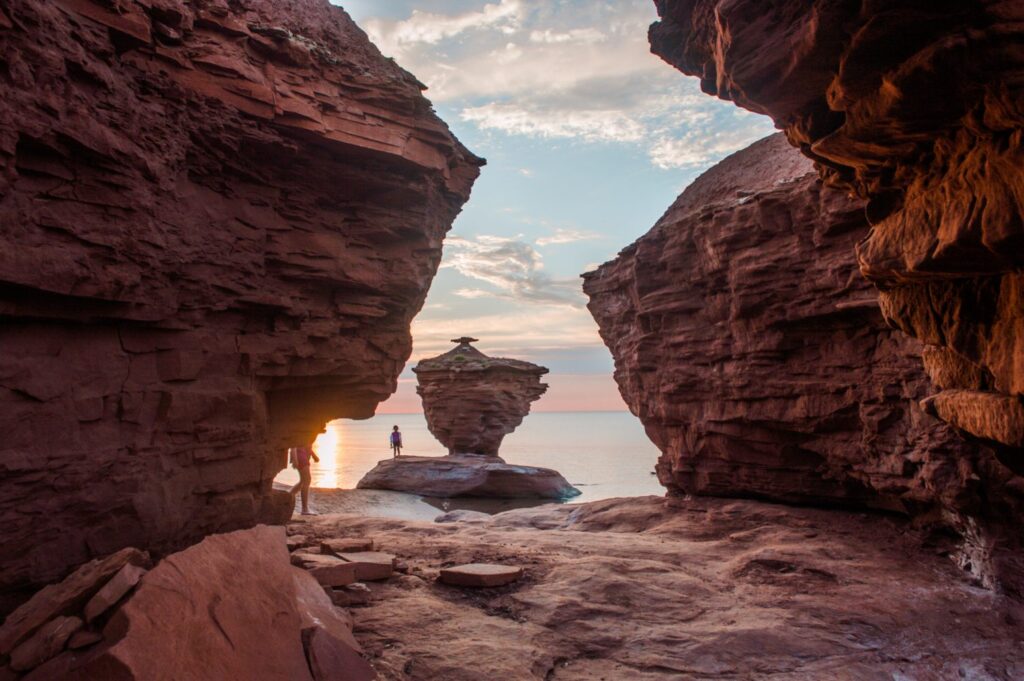
This diversity also has a direct impact on temperatures. So on that note, do remember that…
6. Temperatures in Canada can vary wildly across the country
There’s a common misconception that Canada is really cold, and it can be but it definitely depends on where and when you go. Winter in Winnipeg for instance is very different to winter in Vancouver, and we actually get some pretty hot summers across the board, even up north so when you’re doing your research, make sure you look into specifics regarding your destination rather than trying to search up general Canada facts.
And let this knowledge guide you as well when it comes to deciding when to visit!
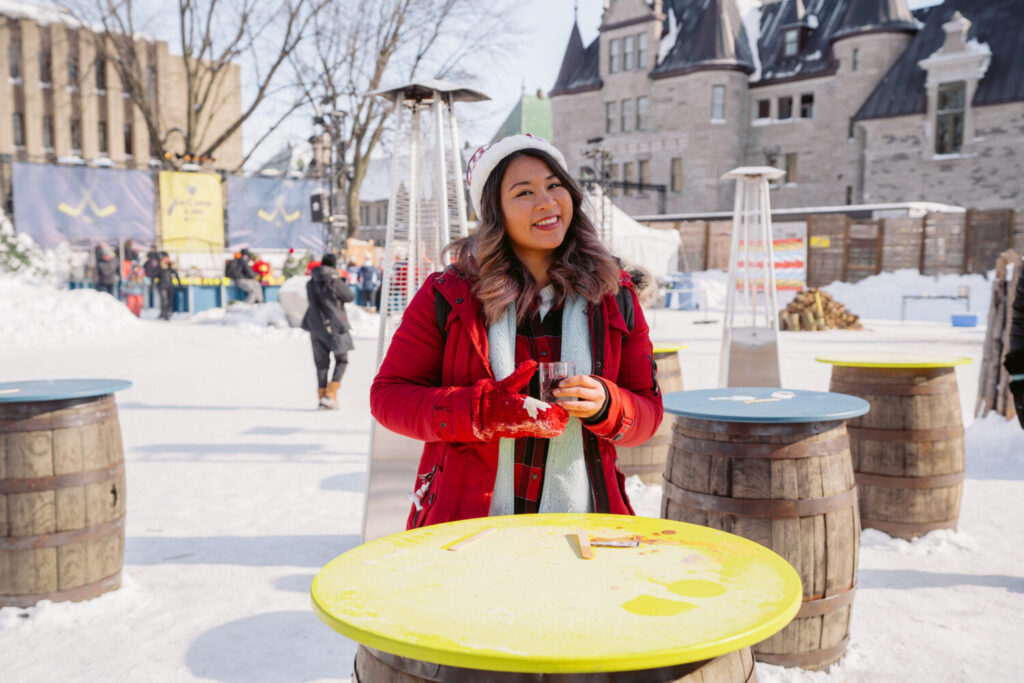
7. French isn’t spoken widely everywhere in Canada
Another common misconception is that all Canadians speak French.
Granted, French is an official language of Canada but in many parts of the country, you wouldn’t be able to just use French and expect to be understood by everyone. While most Canadians learn some French in school, many never reach a level of fluency that would allow them to converse easily at the drop of a hat.
In fact, there’s only one official bilingual province in Canada, and it’s not the one you think. It’s actually New Brunswick or Nouveau Brunswick. In Québec the only official language is French.
So you definitely won’t need to learn French for your Canada trip unless you’re heading to (more rural parts of) Québec. In popular tourist areas like Québec City and Montréal, you’ll find most people do speak at least some English, especially in touristy settings like hotels, attractions, etc.

If you are heading to Québec though, do beware that…
8. Québécois French is quite different from the French they speak in France
Yes, even French speakers themselves can get confused in Québec because the accent is quite distinct, and there are certain vocabulary differences too between Québécois French and the French they speak in France and other Francophone countries.
So, beware that even if you do some French language learning in advance of your trip, you might struggle to understand what’s being said. So, anchor your practice around Québécois French.

9. Learn the lingo for Canadian money
In terms of currency, we of course use the Canadian dollar (CAD).
In Canada, our bills are very colourful and made of plastic, and there’s a common myth that our 100 dollar bills smell like maple syrup. Call it a weird mind trick, but I swear it actually does.
Coin-wise, pennies have been abolished for years so if you pay with cash, they round the number. 5 cents are known as nickels, 10 cents are dimes, 25 cents are quarters and the most Canadian thing ever is that 1 dollar coins are called Loonies and 2 dollar coins are called Toonies.

10. Most businesses prefer card payments
In practice though, while there are pockets of places where cash is still king (usually small businesses looking to avoid fees), these days you’ll be using card more often than cash, so make sure you have a card that minimizes currency exchange fees whether that’s debit or credit.
I’ve been using Wise for years and have no complaints! Click here to get your first transfer for free up to $500.
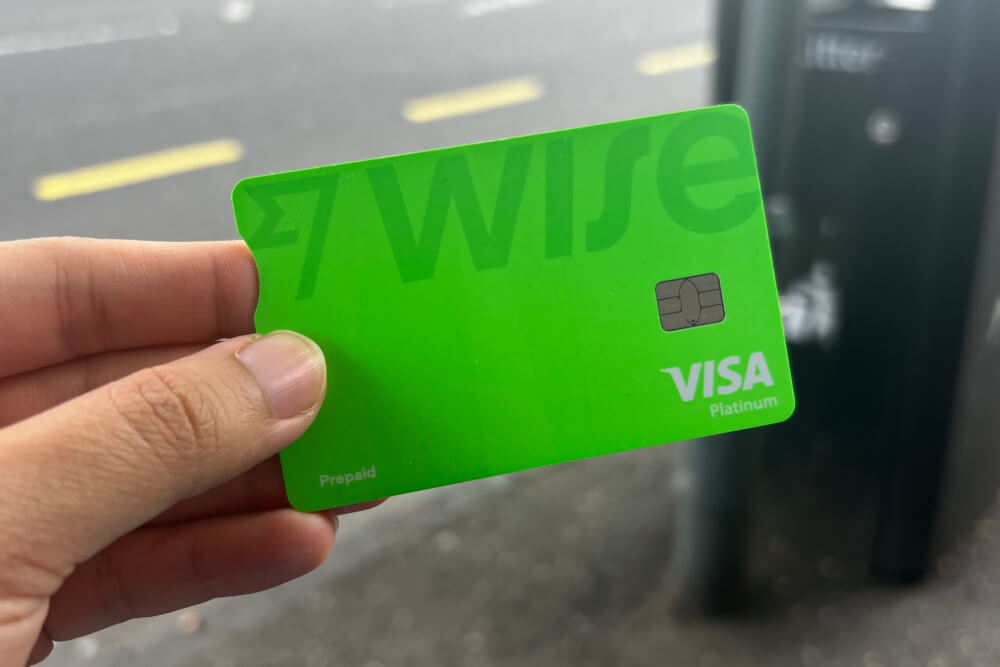
11. Plan far ahead for accommodation if you can
Unfortunately, accommodation in Canada is very expensive and to be honest, value for money is generally quite poor.
You can expect to pay upwards of $300 CAD a night for a very average hotel room so all the good value options get snapped up very quickly.
PS: When choosing a place to stay, location can be very important. So pay special attention to this. Often the cost effective options are cheap for a reason, whether because it’s far from the main sights, sometimes in another city altogether, or perhaps in a less desirable part of town where safety could be an issue. So be very thorough before booking and read plenty of reviews!

12. Beware that campsites book out very far advance
Camping culture in Canada is so wild to me because it makes spontaneity really difficult but hey, if you’re travelling, I guess you’ll be planning many other things in advance anyway.
All the campsites run by Parks Canada can be booked through their online portal which opens up between January and February, depending on the location. If you have your heart set on a particular location or date, you really do need to make sure you’re online when this portal opens. You can learn more about launch dates on the official Parks Canada website.
NOTE: There are usually some First Come, First Serve campsites in each area, so have a search of those if you are needing more spontaneity for your trip.

13. Make sure to enjoy some nature during your trip
Now, when making your itinerary do make sure you include some nature in there and visit beyond Canada’s cities. Being from a major Canadian city, I can say that the best stuff is often found in the great outdoors!
But do note that if you’re visiting any national parks, you will need to pay an entry fee (multi-park passes are also available) .
You can find the full price list on the official Parks Canada website.

14. Make sure you have the right plugs/adapters
FYI, Plugs in Canada use Type S and B plugs so you may need an adapter or converter for your electronics.
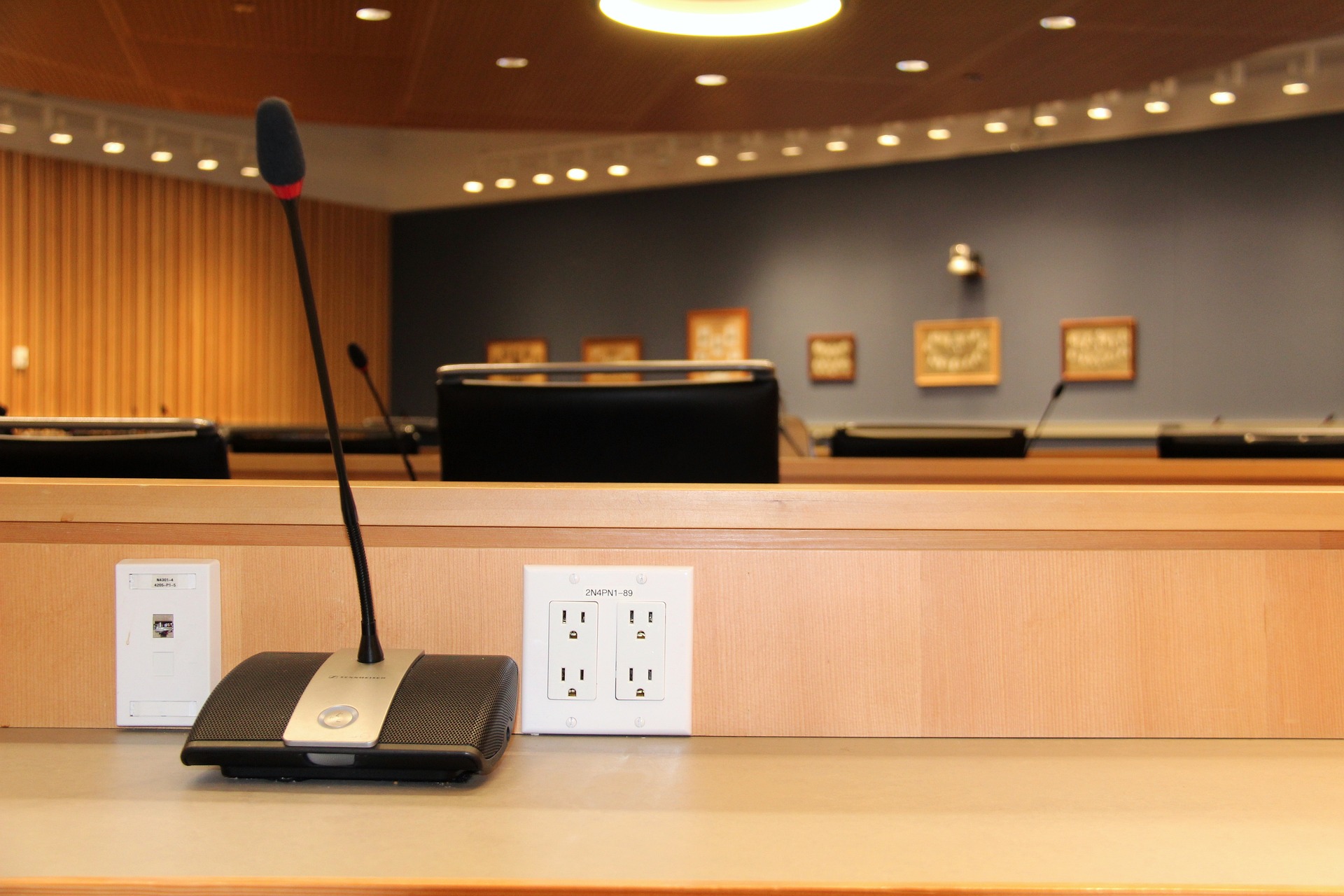
15. Flying is the best way to get around from city to city
This is just due to how spread apart everything is.
Air travel in Canada is dominated by two main airlines: Air Canada and WestJet.
Honestly, both are fine, but both are also flawed. I wouldn’t say one is objectively better than the other, so I would just go based on who has better prices or maybe who you have loyalty status with.
There are now also some budget carriers like Flair Air or Porter as well. Porter in particular has been very popular lately because they offer free beer, wine and snacks… and having flown with them last year, I can definitely recommend them, though beware the planes themselves can be a bit older!
Now with these budget carriers, be mindful that some of them have severe restrictions on baggage limits so sometimes flying with a so called mainstream carrier might end up being the same price.
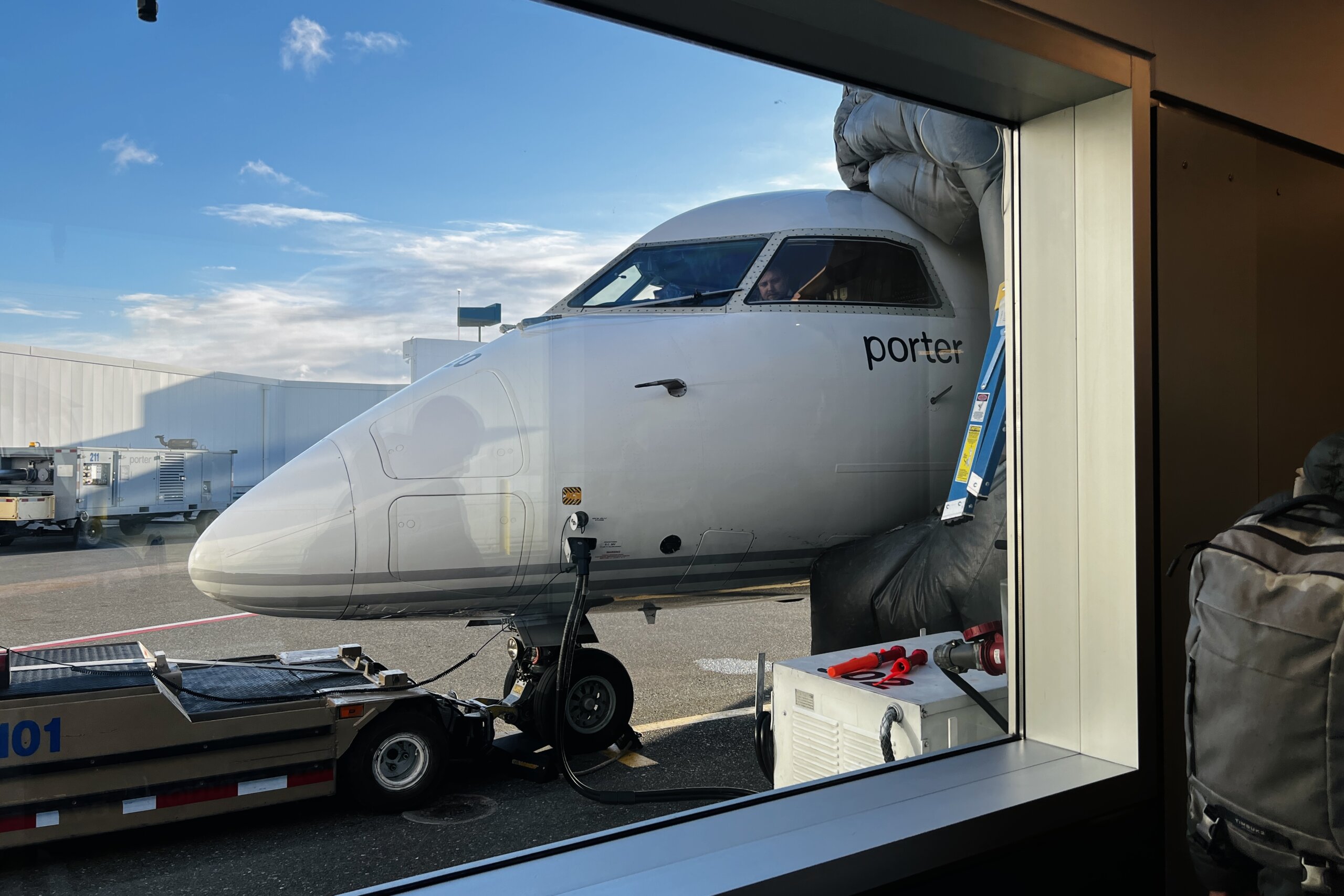
16. Long distance bus travel in Canada generally is limited and impractical
If you’re hoping to catch cheap buses around the country, I have some bad news.
There have been very limited long distance bus services in Canada ever since Greyhound shut down their services nationwide in 2021. Plus, the journey times just make bus travel a bad choice overall for going between Canadian cities.
NOTE: In some areas, you’ll find carriers like Flixbus as well, which we took to get between Toronto and Niagara Falls. They’re fairly no frills but do the job, so work fine for shorter distances.

17. Long distance passenger rail isn’t ideal for most visitors
Long distance Passenger rail leaves a lot to be desired in Canada, with the main exception being around Ontario and Quebec. There’s only one national passenger rail company in the country and that’s VIA Rail, whose route map looks like this, with most routes concentrated around Ontario/Quebec.
If you do plan on exploring Canada by train though ,as someone who has done it from Vancouver to Halifax, there are a few things you really need to know.
First, you should only prioritize train travel if you’re not in any rush. Canadian passenger rail is notorious for its delays, which can accrue to a day or more if you’re doing a long distance route like between Vancouver and Toronto. So unless your goal is to experience the train aspect of it, there are much better ways to get around.
In terms of saving, Tuesdays are the best days to book with VIA RAIL. There’s pretty much always 10% off with the discount code TUESDAY and they drop prices for some routes during this time.
If you’re flexible, there’s also a page of their website that shows the best deals from your departure point.

18. Public transport is generally decent in large cities, but a car is needed to explore outside cities
Now in terms of shorter distances, if you’re using Canadian cities as a base, public transport is generally decent, with options including buses, trams, ferries and even rapid transit like the Skytrain in Vancouver, the subway in Toronto or the Metro in Montreal.
So if you’re visiting a major Canadian city, I’d say public transport is totally fine and you won’t need a car.
That said, if you want to go out in nature or explore beyond the center of the city, renting a car makes sense.
This will also give you more flexibility.
I typically use DiscoverCars because they can show you a bunch of different rental companies at once, which can help you find the best deal.
It’s worth noting as well that most Canadian cities also offer bike share programs now.

19. Sales tax is added on what you see on the price tag
Annoyingly, which taxes you’re charged and how much you’re charged depends on the province or territory… but one overarching theme in Canada is that the prices you see on products at shops does NOT include tax, so you can always expect to pay a little more.

20. Tipping is very widespread in Canada
Speaking of paying more, let’s tackle Canadian tipping culture!
Unfortunately, it is fully expected that you tip in a range of situations and services, from restaurants and bars, to taxis and even services like haircuts.
Expected tips have been climbing steadily over the years, to the point now where tipping 20% for good service is actually fairly standard.
I don’t love this system, but it’s so widespread that visitors should prepare for it everywhere they go. Even in the liquor store which is wild.
When paying by card, which is the norm these days, you usually choose your tip on the machine as you pay and enter your PIN. Usually you can choose either set amount or a percentage which helps do the math for you.
In quick service or counter places, it’s also fairly common for a tip option to appear on iPads in front of you as you’re making your purchase. Opinion is split on whether tipping in these cases in needed, but don’t be surprised if you get some attitude from staff if you choose not to tip.
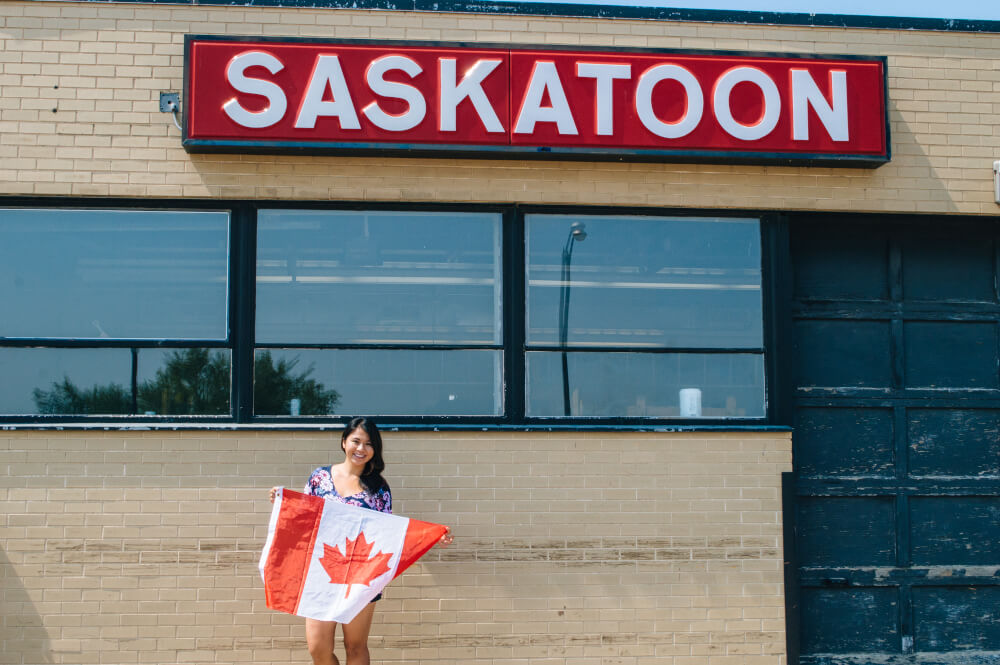
21. Take advantage of Canada’s diverse food culture
In terms of food, I think a lot of first time visitors are keen to explore whatever Canadian cuisine is.
But I have to say, one of the best things about Canada is how diverse the population is and how much we honour our multicultural roots by eating food from all around the world.
We always say In Canada our approach to multiculturalism is a cultural mosaic, where we celebrate the diverse roots of our population. One area where you really see this is the food scene. In fact, some popular dishes from large immigrant populations like perogies are so widespread that I almost consider them honourary Canadian foods.
So be sure to try as many different cuisines as possible! Which ones to try may depend on where you are – for instance, sushi and Chinese options are amazing in Vancouver, whereas Jamaican patties are practically their own religion in Toronto.

22. Make sure to try some Canadian classics though
That said, there are some Canadian staples that are definitely worth trying.
Nationwide, besides the obvious maple flavoured everything the most popular Canadian food innovation is Poutine. This is a specialty from Quebec that involves fries topped with gravy and squeaky cheese curds. Its amazing especially after a few drinks.
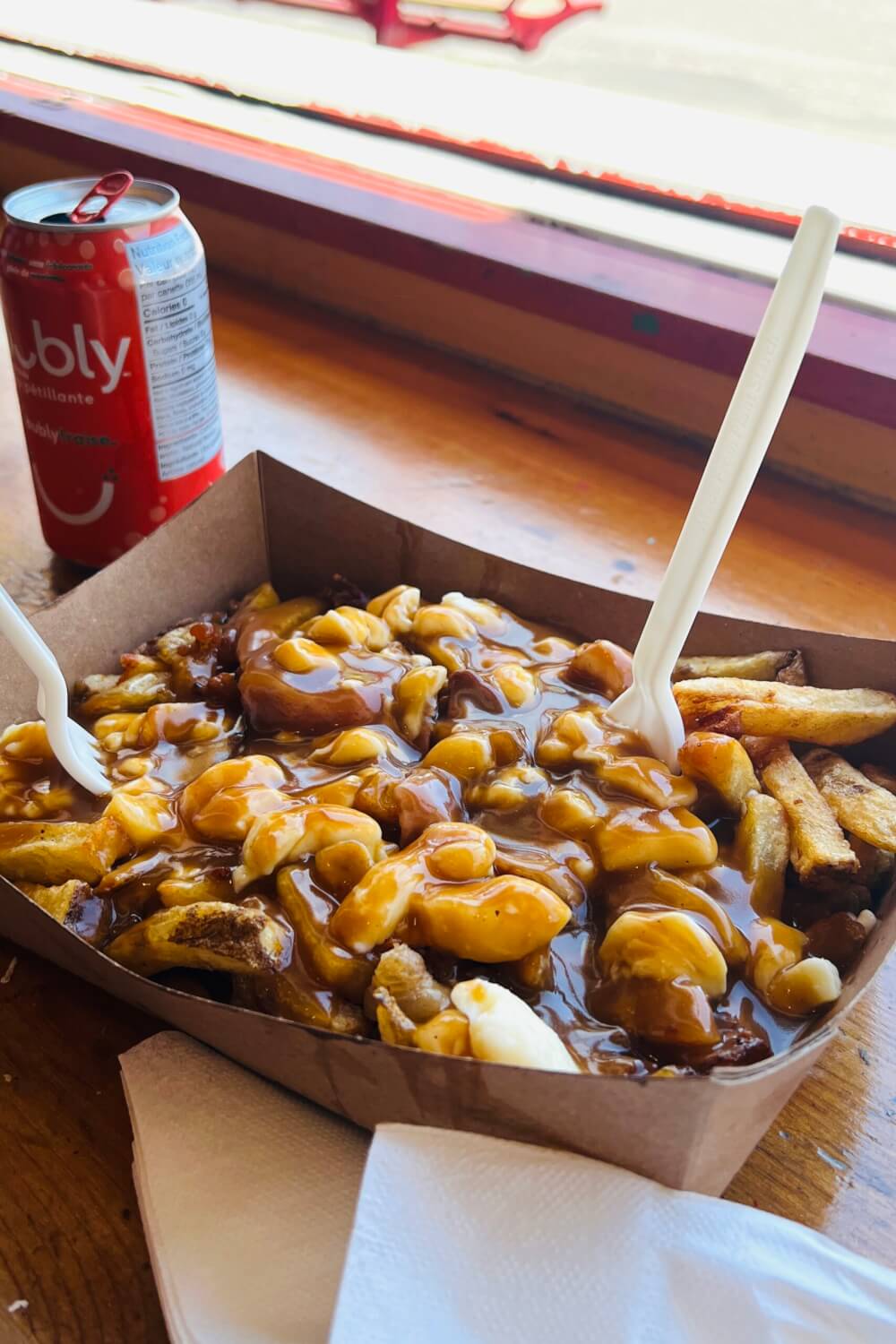
Donairs are another uniquely Canadian take on the traditional döner kebab, typically made with beef and a sweet donair sauce.
And of course we can’t forget Canadas national cocktail, the Caesar which is like a Bloody Mary but made with Clamato juice instead – so tomato and clam juice, plus vodka, hot sauce, Worcestershire sauce and an array of interesting garnishes. It’s not everybody’s thing but definitely a must try.
Not to mention the many unique snacks and flavours we have in Canada like ketchup or all dressed chips. As well as sweet treats like butter tarts and Beaver Tails which are deep fried slabs of dough with fun toppings.
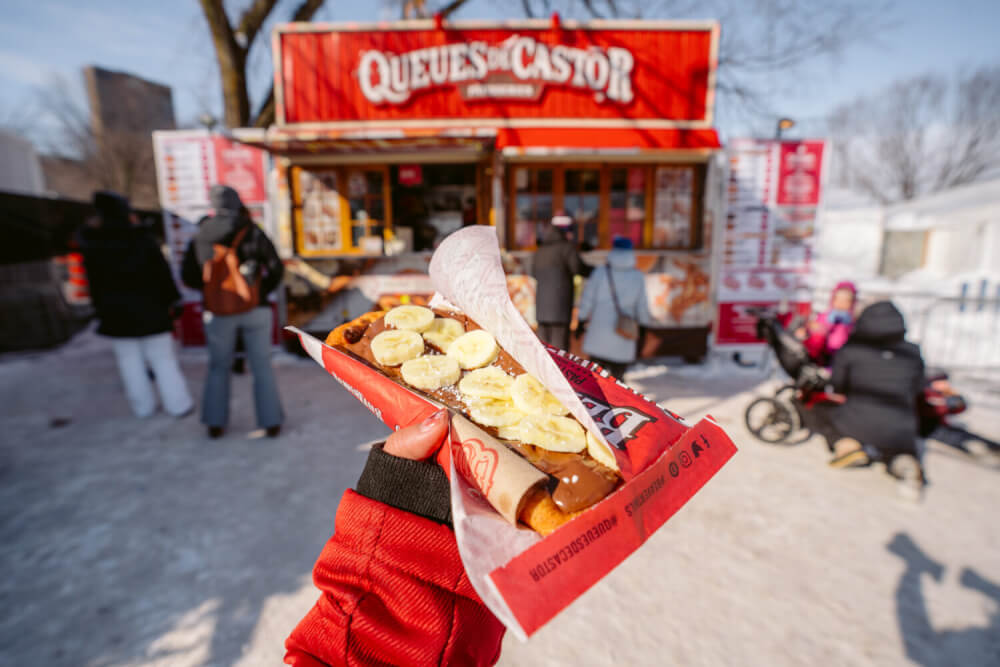
Other regions in Canada also have their own specialties like the incredible lobster rolls of Atlantic Canada or the smoked meat and bagels of Montreal, so be sure to do your regional research and your taste buds will thank you!
Oh, and Tim Horton’s is of course a Canadian national icon but do beware that’s not necessarily for the quality of their food. Like, it’s fine, and always a great stop on a road trip, but don’t expect anything there to really blow you away in terms of quality and taste.
If you do go though, I’m a big fan of their breakfast sandwiches and the most standard coffee order is a double double which means coffee with two creams and two sugars. It you want something delicious though order a half French vanilla half coffee. It’s so good.
Finally, I also recommend you try some Indigenous food in Canada if you get a chance – there are lots of restaurants popping up around the country offering the likes of fresh bannock (a type of tasty flat bread), bison burgers, and various type of game sausage.
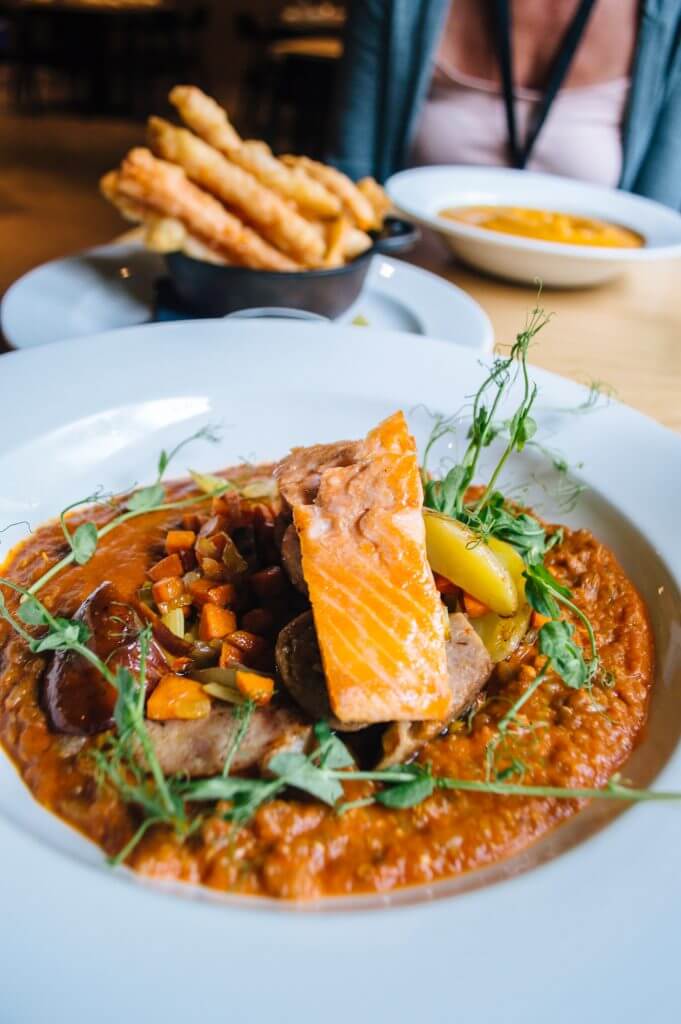
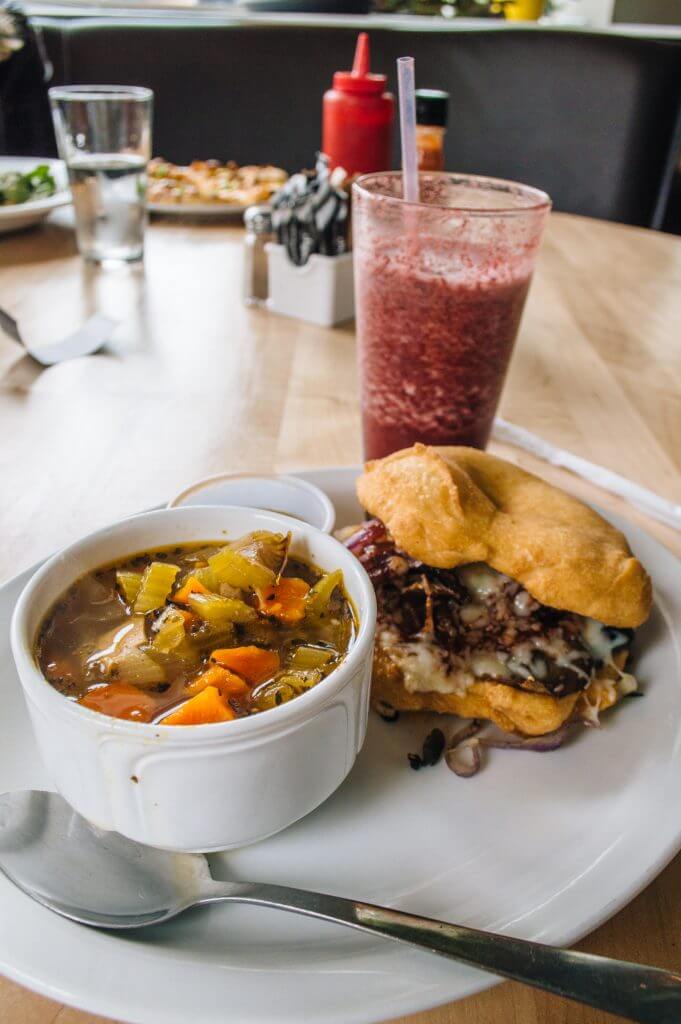
23. There are 700+ unique Indigenous communities across Canada
On that note, if you are visiting Canada and are interested in learning more about Indigenous history and culture, do know that there are over 700 unique Indigenous communities across Canada, so there’s a lot of ground to cover.
FYI, in Canada, we tend to use the term Aboriginal or Indigenous to describe the first inhabitants of Canada, including First Nations, Inuit, and Métis peoples. Terms like Indian and Native are definitely less common so tailor your research accordingly.
If you are interested in seeing this side of Canadian culture, then Destination Indigenous is a great resource to start with.
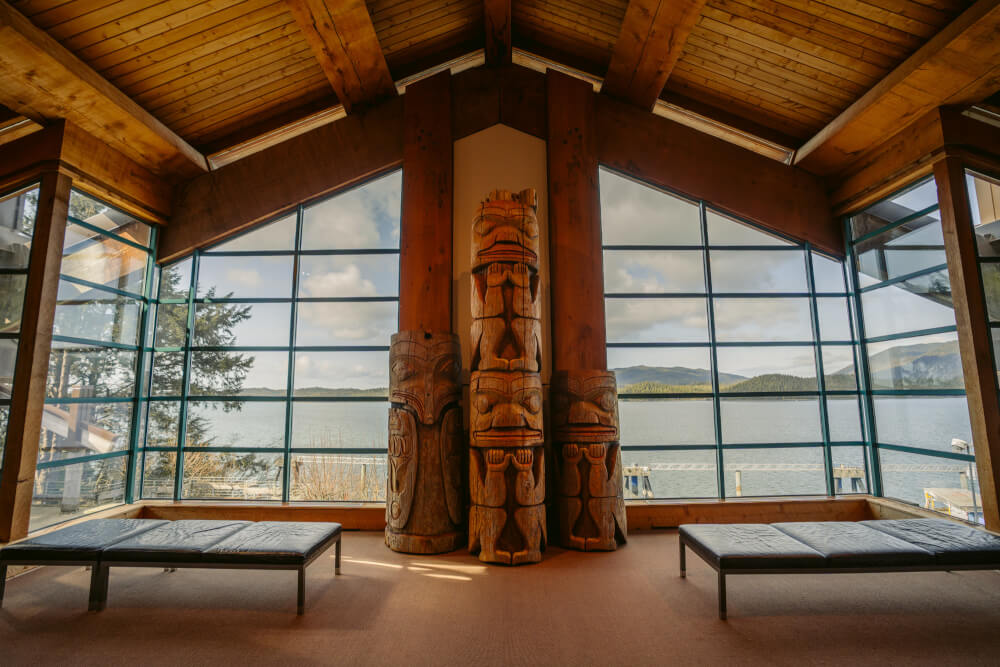
24. Stay away from wild animals and learn best practices in advance
Now in terms of safety, it’s very important to remember that while Canadian animals are cool, they can be very dangerous!
Especially in nature-focused spots like Banff, you often hear about tourists getting out of their cars to photograph and get close to dangerous animals like bears, elk, moose, etc.
Don’t let that be you!
Yes, Canadian wildlife is epic but at the end of the day you have to remember these are wild animals that can do you a lot of harm if provoked, so remember to keep your distance. Even with cute small ones like raccoons.
BONUS TIP: If you are planning a trip that invokes a lot of hiking or time in the outdoors it’s also helpful to learn some basics in terms of being bear aware because yes depending on where you go, there may be bears.
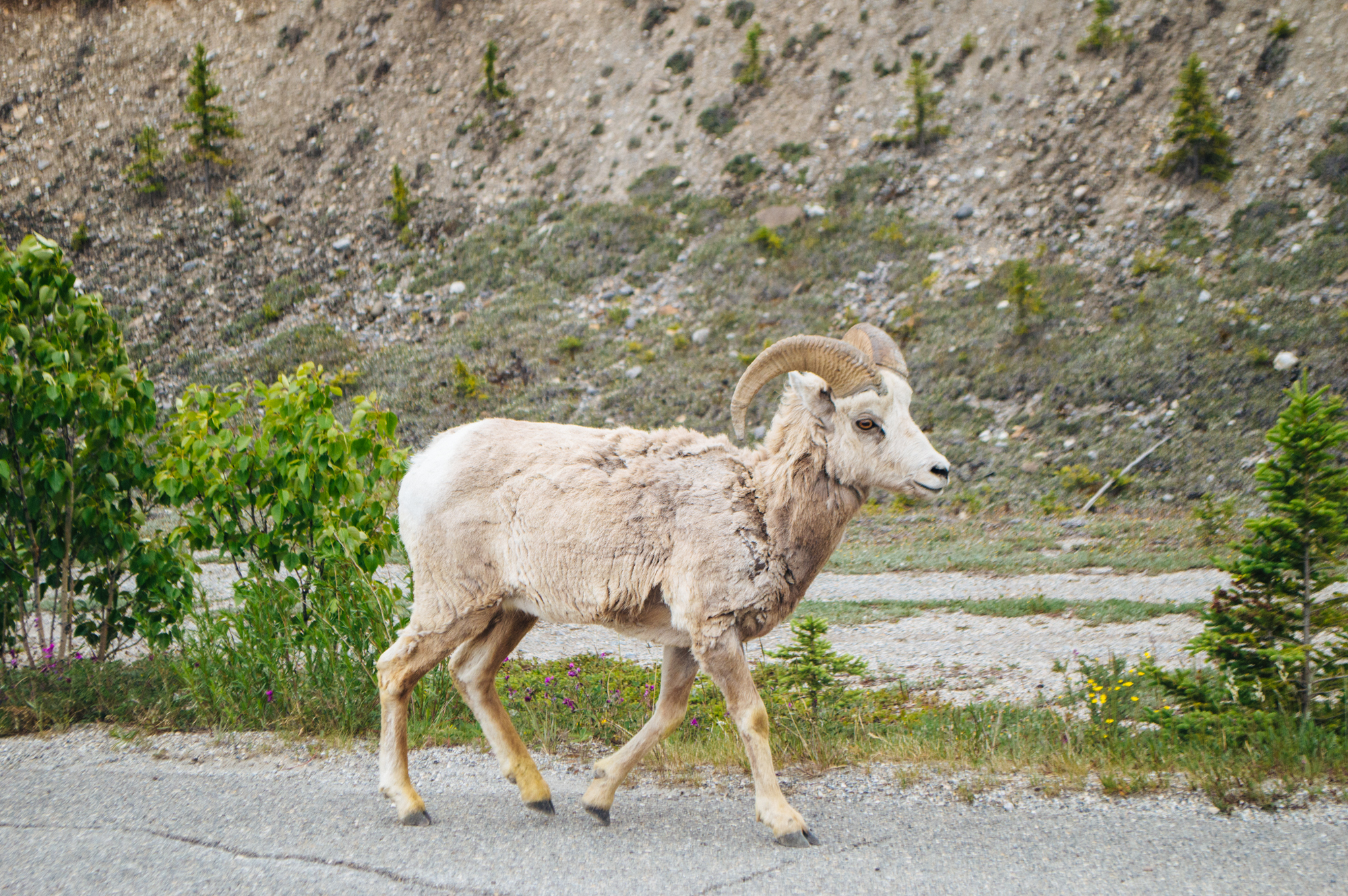
25. Beware of the bear-proof trash cans
In Canada, you’ll commonly encounter trash cans that are built to be bear proof so if you’re faced with a trash container you can’t open, then look around for a button or latch you need to press to open the door, usually it’s underneath a handle like thing that looks like this:
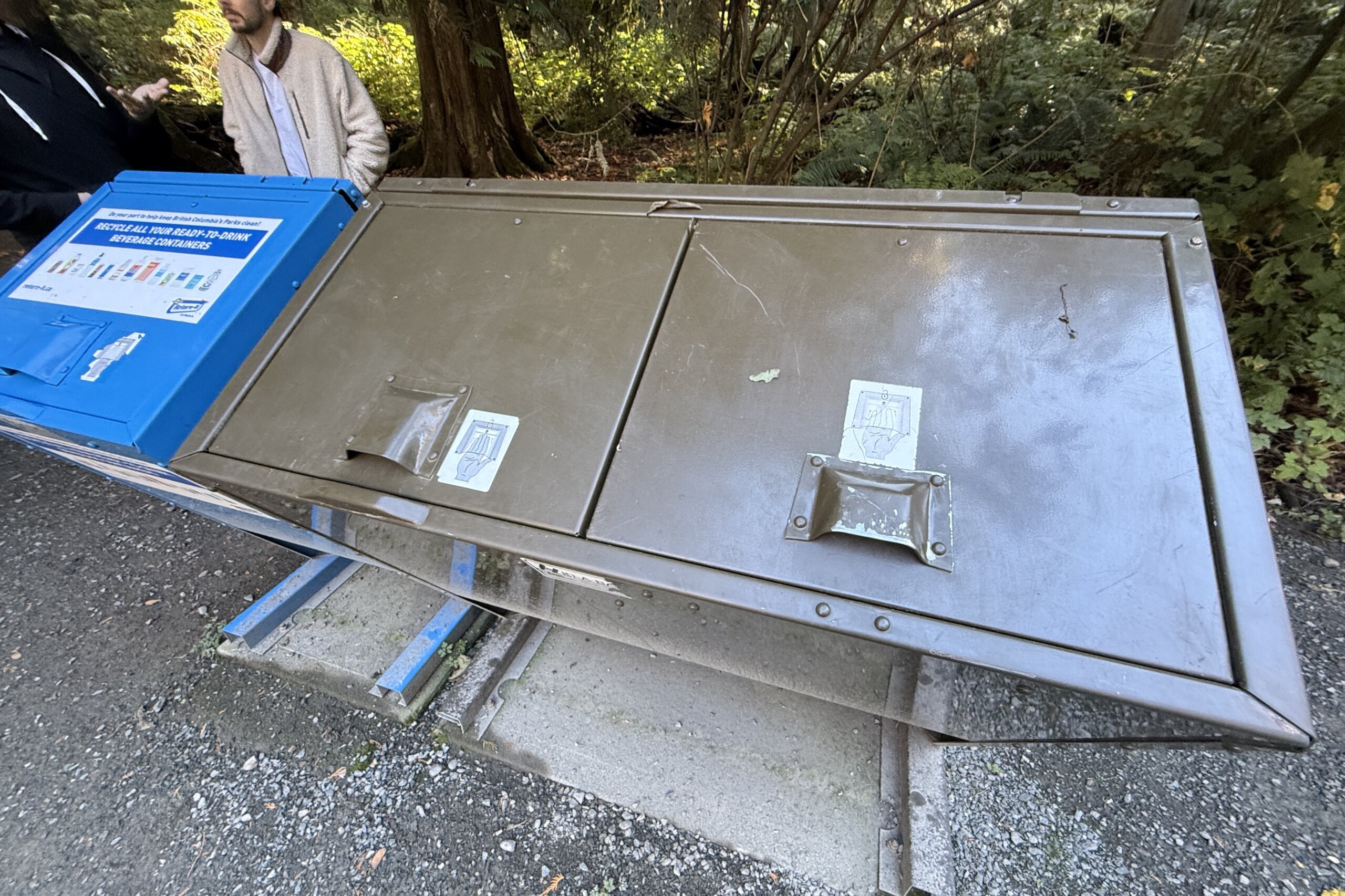
26. Be careful with ice and walking on frozen lakes/rivers
On a similar safety note, if you’re coming in winter, do be SO careful when it comes to ice. Never walk out on a frozen lake or river unless you’re with someone who is experienced and knows what they’re doing in terms of checking whether or not it’s safe. A good rule of thumb for tourists is to just not walk out on ice.
You should also avoid getting too close to waterfalls or cliff edges and though that feels like common sense, I fear it is not.

I Hope You Enjoyed These Canada Travel Tips!
Let me know in the comments if you have any more to add.

